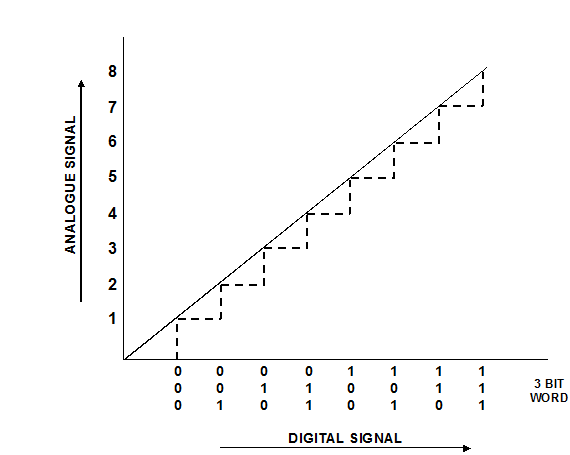Analogue to digital converter:
In an ADC a range of input values must correspond to a unique digital word. The type of code used depends on the system but here only binary coding will be considered.
Consider an analogue signal, which can take on any value between 0 and 7 volts. For any particular voltage there is a corresponding binary code word. For example, using 3-bit words, the voltage analogue value between 4 and 5 volts would be represented in binary code by the word 100, which would change to 101, when the analogue value passed through 5 volts.
Figure shows digital representation of an analogue input signals.

The levels at which the code changes are known as quantisation levels, and the intervals between them as quantisation intervals. In the example given in Figure 5.3.3, the quantisation levels are 0, 1, 2, 3, 4, 5, 6 and 7 volts, and the quantisation interval is 1 volt.
Using a 3-bit word gives 23 = 8 different quantisation levels. With a 4-bit word we would have 24 = 16 quantisation levels with 0.5 volt quantisation intervals giving improved resolution over the same range of input voltage.
Thus the more bits available the greater the resolution for a given range of analogue signal input. It can be seen from the above that an ADC using an n-bit word would have a resolution of one part in 2n.